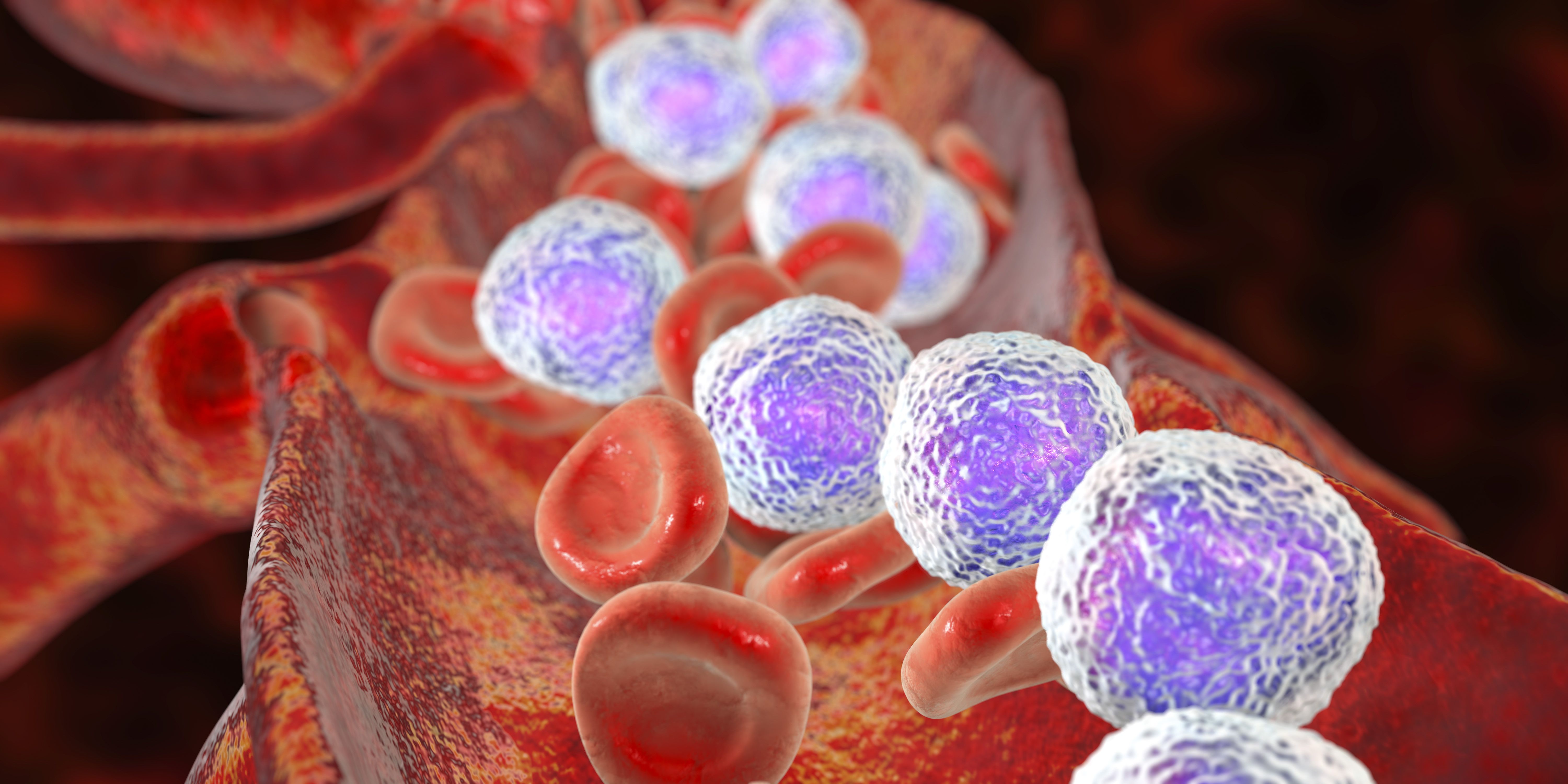Novel Therapy Yields High Remission and Response Rates in Pediatric R/R B-ALL
Bicistronic CD19/CD22 CAR T-cell therapy had improved safety, durability, and high remission rates in pediatric patients with R/R B-ALL.
Bicistronic CD19/CD22 CAR T-cell therapy had improved safety, durability, and high remission rates in pediatric patients with R/R B-ALL.

Safety, efficacy, and remission rates were improved when bicistronic CD19/CD22-directed CAR T-cell therapy (B019) was used to treat pediatric patients with relapsed/refractory B-cell acute lymphoblastic leukemia (B-ALL), particularly in patients with isolated or combined extramedullary relapsed disease, according to updated data from an investigator-initiated phase 2 trial (ChiCTR2000032211), presented at the 2024 American Society of Hematology Annual Meeting and Exposition.1
At a median follow-up of 13.9 months, the 1-year event-free survival (EFS) rate was 75.5%, and the 1-year overall survival (OS) rate was 93.5% among patients enrolled and treated with bicistronic CD19/CD22-directed CAR T-cell therapy (n = 343). Following CAR T-cell expansion, the 1-year EFS rates among patients who underwent bridging bone marrow transplant (n = 38) vs those who did not (n = 280) were 89.7% vs 76.8%, respectively. The respective 1-year OS rates were 95.8% vs 95.2%.
“After CAR T-cell therapy, we have found that the 1-year EFS [rate] is higher [with] CAR T-cell treatment plus bone marrow transplant than CAR T-cell treatment alone, [although the] 1-year OS [rates were] very similar between these 2 [populations],” presenting author Hua Zhang, MD, PhD, vice president and chief scientific officer at SPH Biotherapeutics (HK), Limited, stated in an oral presentation of the data during a virtual press briefing.
Most patients developed cytokine release syndrome (CRS); those with lower-grade CRS had better 1-year EFS outcomes than those with higher-grade CRS (P = .0191). Among the 172 patients with grade 1/2 CRS, the 1-year EFS rate was 80.9%; the 1-year EFS rate for the 145 patients with grade 3/4 CRS was 69.9%.
In the presentation, Zhang added that, “in this study, we found the severity of CRS was not related to the study dose range of infused cells, whereas it was highly correlated with disease burden and CAR T-cell viability.”
Background and Study Rationale
Previously reported data from the single-arm, multicenter, phase 2 trial showed that co-administration of CD19- and CD22-directed CAR T-cell therapy produced relatively durable EFS rates and a high complete remission (CR) rate among 225 children with relapsed/refractory B-ALL or those at a high risk of hematologic or extramedullary relapse.2 CR was achieved in 99.0%
(95% CI, 97.5%-100%) of patients (n = 194), all of whom achieved minimal residual disease negativity. The 12-month EFS rates were 69.2% (95% CI, 60.8%-78.8%), 95.0% (95% CI, 85.9%-100%), and 68.6% (95% CI, 44.5%- 100%) for patients treated for hematologic relapse without consolidative allogeneic hematopoietic cell transplantation (allo-HSCT; n = 116), isolated testicular relapse (n = 20), and isolated central nervous system (CNS) relapse (n= 10), respectively.
Accordingly, investigators developed a bicistronic CD19/CD20-directed CAR T-cell therapy to enhance EFS, OS, and safety outcomes for patients with relapsed/refractory B-ALL regardless of prior exposure to consolidative allo-HSCT following CAR T-cell therapy.1
Bicistronic CAR T-Cell Therapy Trial Design and Patient Characteristics
The study registered patients 0 to 18 years of age with relapsed/refractory B-ALL. Those who met the inclusion criteria continued on to treatment with the study drug. Following enrollment, patients underwent debulking and lymphodepletion during the 7-day waiting period for CAR T-cell manufacturing and preparation. The preparation regimen was administered on day 0. After infusion of the CAR T-cell regimen at a dose of 1 x 106/kg to 10 x 106/kg, patients underwent follow-up to measure CAR T-cell expansion, lymph subsets, and cytokine production. Bone marrow biopsies were also performed at 3 separate time points throughout treatment and follow-up.
Of the 358 patients screened, 15 were excluded from the study due to CD19-negative relapse (n = 11), the presence of germline mutations (n = 2), and 8p11 myeloproliferative syndrome (n = 2). Notably, these patients went on to receive compassionate treatment with the study regimen. The remaining 343 patients were enrolled onto the study and divided into 2 cohorts: those with isolated extramedullary disease (n = 51) and those with refractory/isolated/combined hematologic relapse (n = 292).
Within the isolated extramedullary relapse cohort, 28 patients had isolated CNS relapse, 21 patients had isolated testes relapse, and 2 patients displayed another type of extramedullary relapse. In the refractory/isolated/combined hematologic relapse cohort, 203 patients had isolated bone marrow relapse, 72 patients had bone marrow plus CNS relapse, and 17 patients displayed bone marrow plus testes relapse.
Additional Efficacy Findings and Next Steps
Following treatment, CRs were achieved across all patients in the isolated extramedullary relapse cohort. In the refractory/isolated/combined hematologic relapse cohort, all but 1 patient with isolated bone marrow relapse achieved a CR; this patient died prior to evaluation.
A total of 13 and 228 patients in the isolated bone marrow and bone marrow plus testes relapse subgroups, respectively, underwent subsequent transplantation according to protocol criteria. Notably, 25 additional patients in the isolated bone marrow subgroup underwent transplantation according to parental request.
Based on these results, a phase 1 study of the regimen is underway. Investigators plan to enroll 12 to 18 patients in the study.
References
- Wan X, Li W, Cai J, et al. Safety and efficacy of bicistronic CD19/CD22 CAR T cell therapy in childhood B cell acute lymphoblastic leukemia. Presented at: 2024 ASH Annual Meeting; December 7-10, 2024; San Diego, California. Abstract 681.
- Wang T, Tang Y, Cai J, et al. Coadministration of CD19- and CD22-directed chimeric antigen receptor T-cell therapy in childhood B-cell acute lymphoblastic leukemia: a single-arm, multicenter, phase II trial. J Clin Oncol. 2022;41(9). doi:10.1200/JCO.22.01214